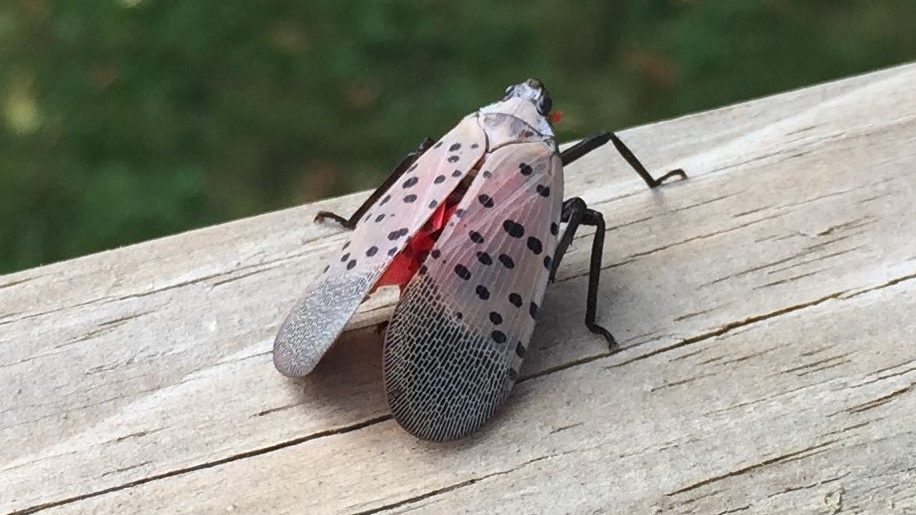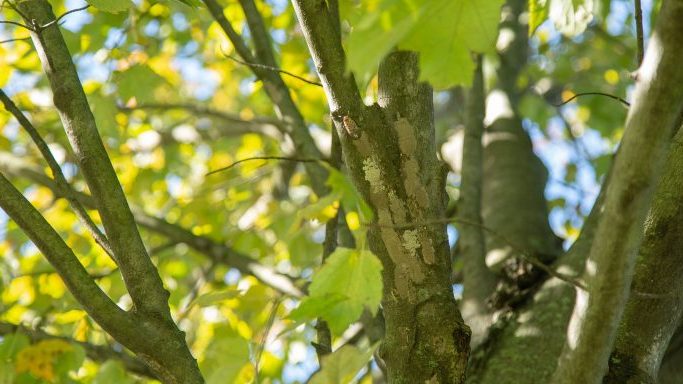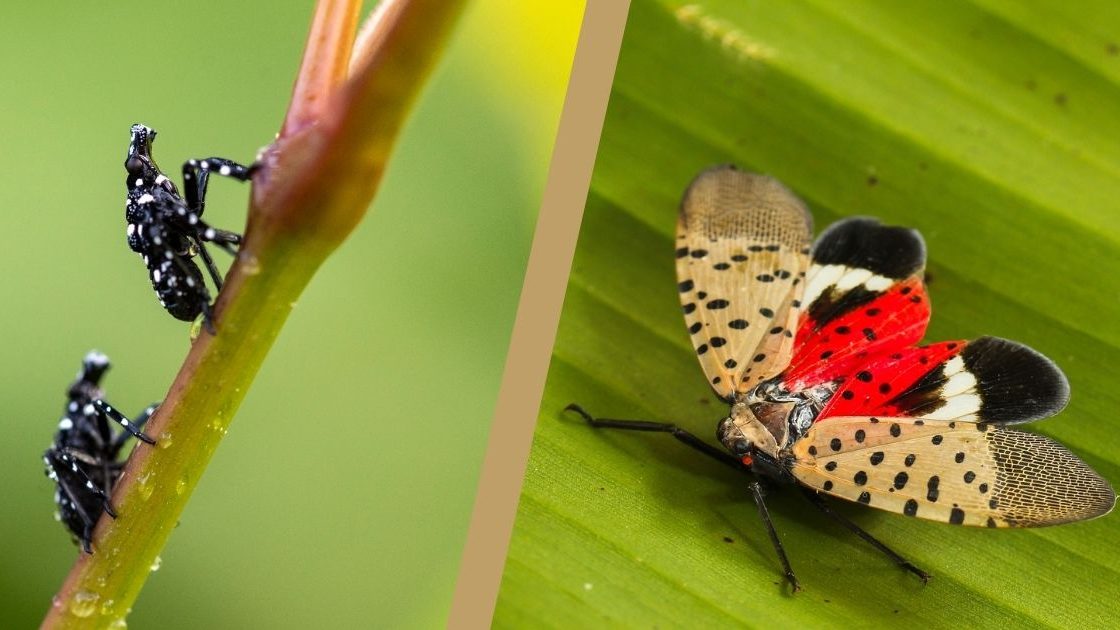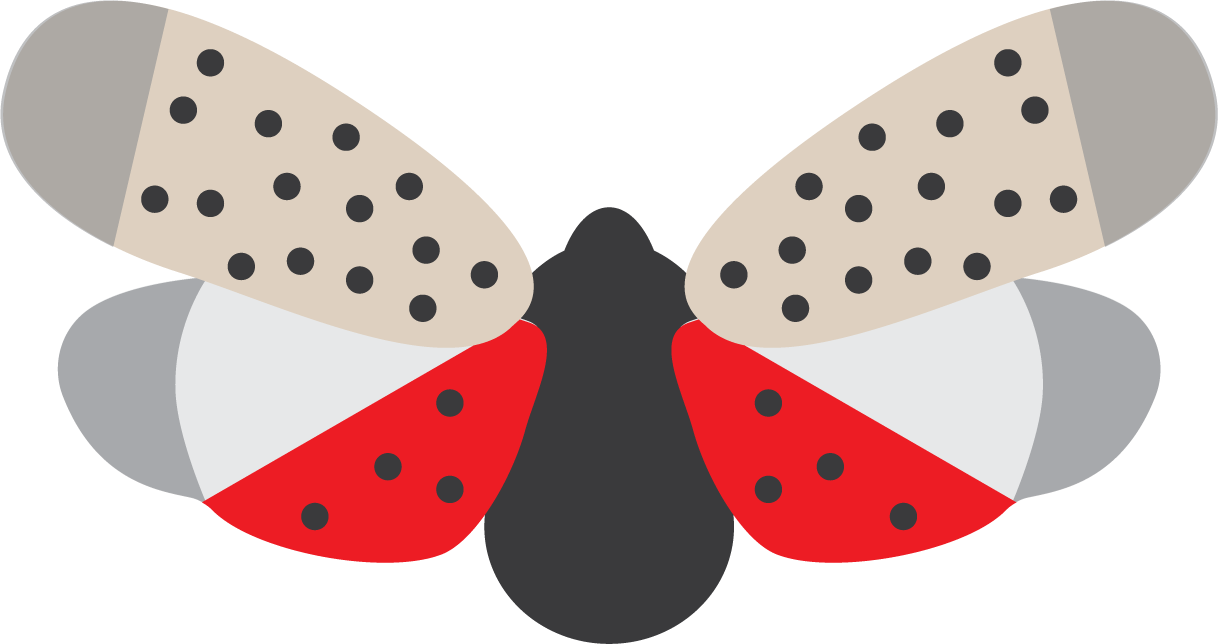
The Spotted Lanternfly in Delaware
The Spotted Lanternfly in Delaware

The spotted lanternfly, Lycorma delicata, is detrimental to Delaware’s agricultural industries, the environment, and residential areas and impacts interstate commerce. It was first detected in Delaware in 2017.

Don't let them takeover!
Spotted Lanternfly Management for Delaware Homeowners
Resources
FAQs
The Spotted Lanternfly is an invasive insect originally found in China, India or Vietnam, and was introduced into Pennsylvania in 2014.
This insect is a member of Hemiptera and has piercing/sucking mouthparts. Adult spotted lanternflies are an inch long and about ½ inches wide. The front wings are grey with black spots, and the hind wings are red with black spots. Their abdomen is yellow with black bands. Immature insects are smaller, black with white spots, and as they age, red patches develop.
This particular insect is a very good hitch-hiker; consequently, vehicles, people, paving stones, and other items from neighboring states should be examined closely if they are near infestations. All outdoor items, including your vehicles, should be examined closely if they are travelling in or out of the state of Delaware (a quarantined area).
They feed on sap from a variety of host trees, including tree-of-heaven, grapes, apples, stone fruits, walnuts, willows, maples and others. Their feeding can frequently cause weeping wounds on their hosts. Excreted honeydew and the sap from the wounds, which leaves a greyish or blackish sticky trail on the plant, are attractive to ants and stinging insects such as wasps. Greyish brown egg masses may be laid on host tree trunks and branches or limbs that are higher in the canopy. They are also laid on nearby structures, stones and benches. Heavy populations may cause branch dieback, wilting, or plant death.
The Delaware Department of Agriculture has an excellent resource, "What has Delaware been Doing to Guard Against Spotted Lanternfly?" Check it out!
Check out our article,




